13 Striking B2B Email Marketing Examples

Email marketing has quickly become the favorite channel for B2B marketers. It not only supports a direct conversational style of communication with your customers but also drives a higher return on investment than other channels. Besides, email marketing allows you to engage prospects, share product information, and establish long-term relationships.
However, if something works so effectively, everyone will use it. A B2B Content Marketing 2020 study showed that 85% of B2B marketers were leveraging emails for lead generation. Therefore, you need to make sure your email stands out in your customer’s inbox.
The article today will bring you a hand-picked list of impressive B2B email marketing examples. Then you can earn more inspiration to take your B2B marketing to a whole new level.
Let’s start now!
What is B2B Email Marketing update?

Business-to-business email marketing means a particular type of email marketing strategy where you focus your email campaigns on businesses instead of individual customers.
Although business-to-business (B2B) email marketing tactics can be misunderstood with traditional business-to-customer (B2C) strategies; there are several significant discrepancies between the two. And your ability to be a successful B2B email marketer depends on how deeply you understand these differences.
When marketers identify the small differences needed for B2B email marketing, they’ll likely see huge improvements for their email campaigns.
Let’s have a quick look at these top B2B email marketing statistics from 99Firms:
- 90% of excellent B2B content marketers prioritize the audience’s informational requirements.
- Personalization is the most widely-used strategy for 47% of B2B marketers in 2020.
- Email marketing was the most executed B2B marketing method in 2019.
Why Email Marketing is Vital for B2B Business Growth
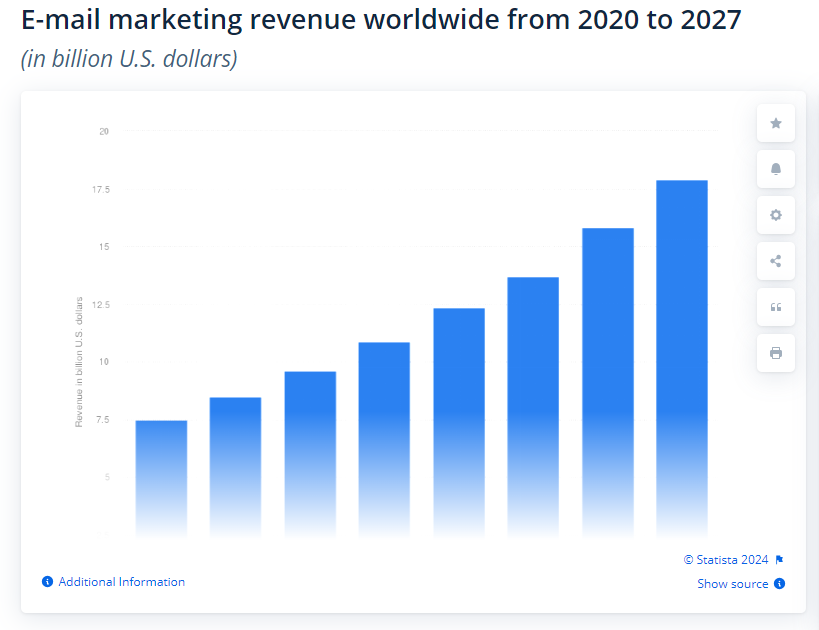
Experience has shown that the email marketing industry is currently valued at approximately 7.5 billion dollars, and this figure is expected to rise in the future. Investing in email marketing is a prudent choice.
Effective email marketing strategies allow companies to connect with their targeted audience and generate additional leads. Additionally, here are some other advantages associated with email marketing.
-
Nurturing Relationships: B2B email marketing helps build and nurture relationships with potential clients. By offering valuable information, you can build trust within your industry.
-
Targeted Messaging: Unlike B2C campaigns, B2B emails target companies rather than individuals. Recognizing that B2B purchases involve multiple decision-makers, your strategy should tailor messages to different roles within the same company.
-
ROI Boost: Email marketing offers cost-effective and measurable results. It allows you to personalize content, making it relevant to recipients and increasing the likelihood of conversions.
-
Brand Awareness: Consistent B2B email communication strengthens brand awareness in the industry.
- Lead Generation: B2B email campaigns help generate potential customers. Attrãctive content encourages opt-ins and captures email addresses, expanding your reach.
-
Enhanced customer retention: Personalized emails demonstrate care for client preferences. Offers, recommendations, and helpful tips keep your brand top-of-mind, leading to stronger customer relationships.
- Behavior Insights: Email marketing provides valuable metrics. Tracking customer activity and purchase history allows better targeting of marketing efforts. Consider using tools like Follow-Up Email for Magento 2 to manage email content and campaigns efficiently. Mageplaza Follow-Up Email extension offers effective digital marketing automation features for creating professional campaigns.
Different Types of Marketing Emails
The ultimate goal of email marketing is to increase conversion rates and help products sell better. However, any email marketing campaign needs to be divided into different stages. Therefore, marketing emails also include many types, each of which will be suitable for each stage and purpose. Here are the most commonly used types of marketing emails:
Welcome emails
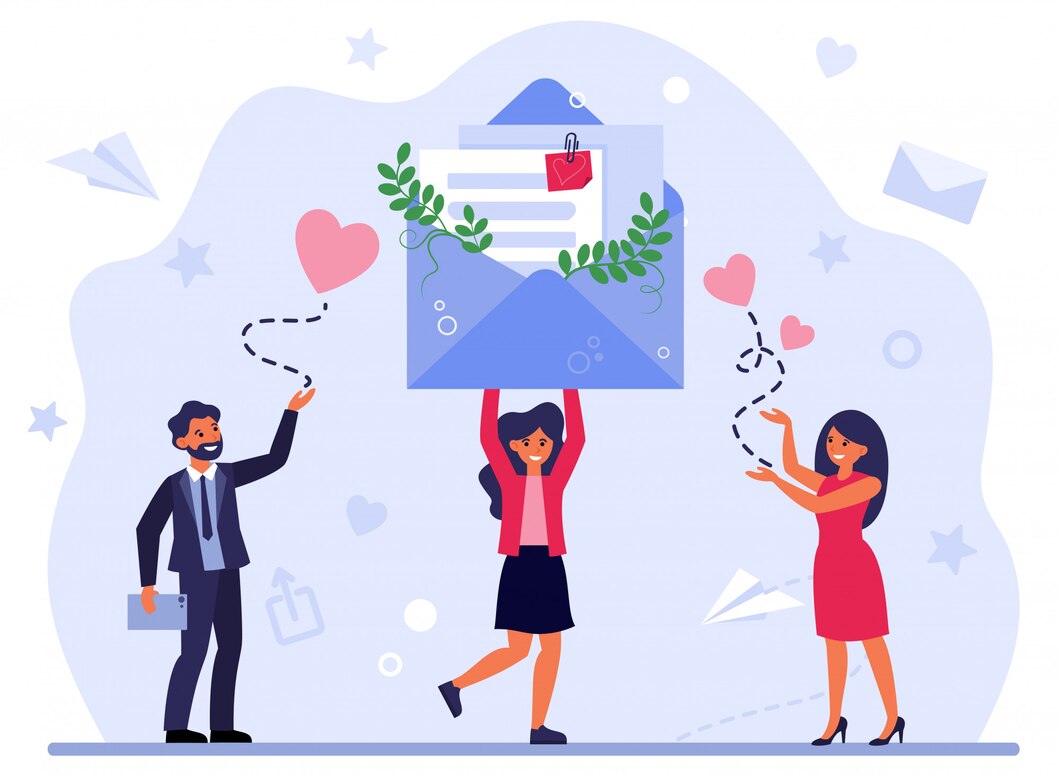
- Introduce fresh members to your brand, highlight top-selling items
- Provide incentives for their initial purchase through a series of welcoming emails. kickstart relationships with new clients.
Promotional emails
- Use promotional emails to inform customers about sales, discounts, and new product releases.
- Emphasize the benefits of your offers and employ compelling calls to action to drive sales.
Abandoned cart emails
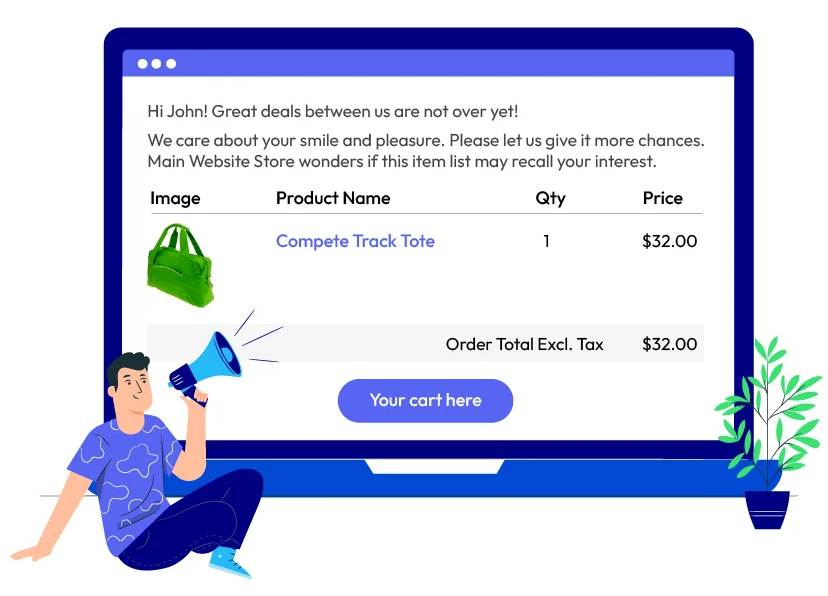
- Remind customers about items left in their cart without completing the purchase with abandoned cart emails
- Offer incentives to entice them to return and complete the checkout process
Win-back emails
- Re-engage inactive subscribers with personalized offers and exclusive deals through win-back emails
- Motivate them to re-visit your store and rediscover your products or services
Curated recommendation emails
- Suggest products based on customers’ browsing history and past purchases with curated recommendation emails
- Personalizes the shopping experience and increases the chances of conversions
Birthday emails
- Send personalized birthday discounts or greetings to make customers feel special and valued
- Strengthen brand loyalty and encourage repeat business
Event invitation emails
- Invite customers to participate in online or in-person events with event invitation emails
- Generate excitement and engagement around your brand
Educational emails
- Provide valuable content related to your industry or products with educational emails
- Establish yourself as a thought leader and build trust with potential customers
Execute an Email Marketing Campaign
Here, We’ll provide a simple summary of the tasks involved in your email marketing process and guide you in the appropriate direction when you’re prepared to begin.
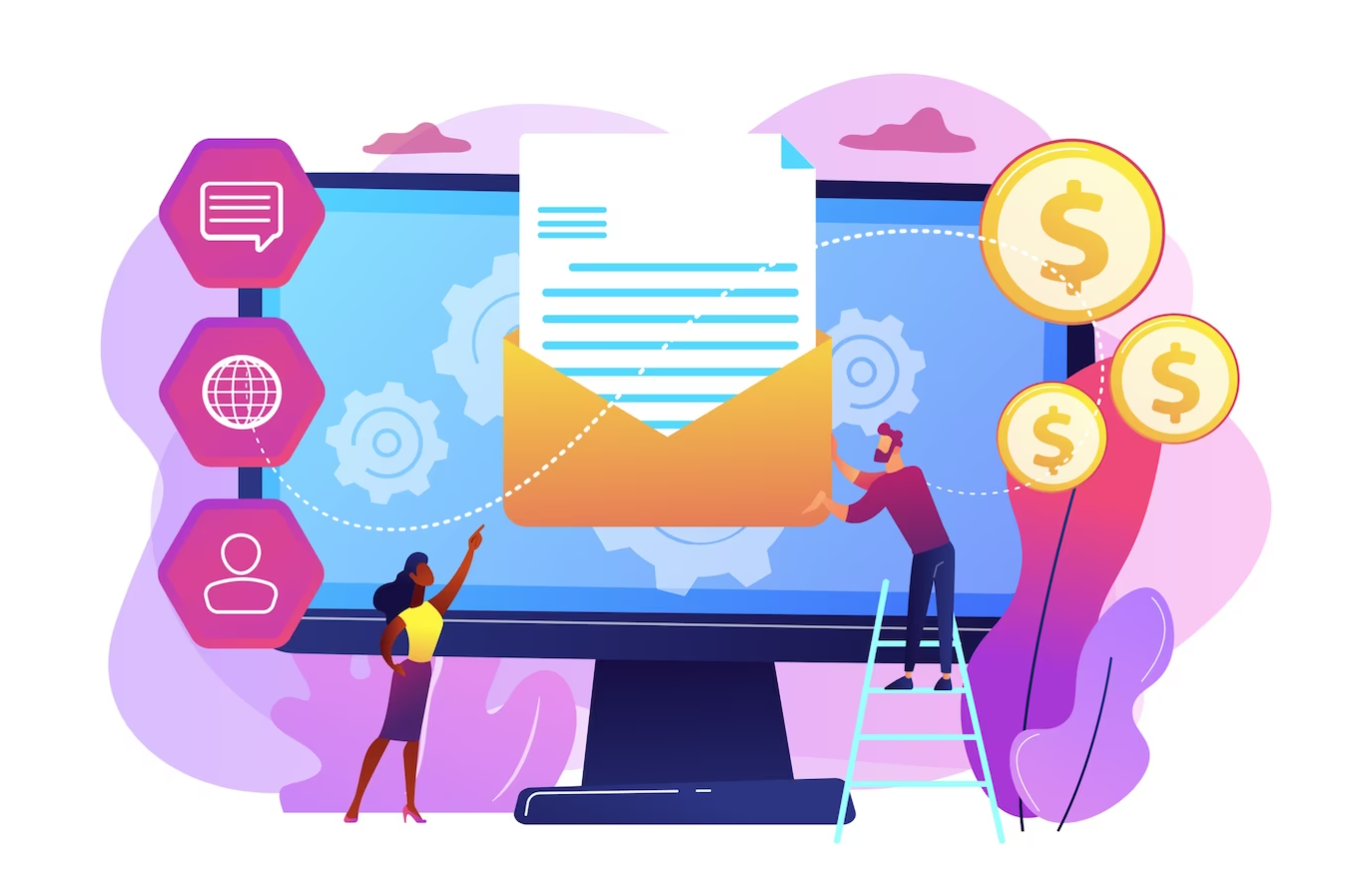
Define Your Goals: Determine what you want to achieve with your campaign, such as increasing sales, driving website traffic, or building brand awareness.
Grow Your Email List: Gather email addresses from your desired audience via opt-in forms on your website, social media platforms, or in-person registrations at your store.
Segment Your Audience: Split your email database into groups according to demographics, purchasing behavior, or engagement metrics to deliver tailored and personalized communications.
Create Compelling Content: Develop engaging and relevant content for your emails, including compelling subject lines, informative product descriptions, and captivating visuals
Design Your Emails: Design visually appealing email templates that align with your brand identity and are optimized for different devices, including desktops, tablets, and smartphones.
Test Your Emails: Conduct A/B tests on various elements of your emails, such as subject lines, images, and call-to-action buttons, to optimize performance and improve results.
Monitor and Analyze Results: Monitor important metrics such as open rates, click-through rates, and conversion rates to gauge the performance of your campaign. Utilize this information to fine-tune your tactics and enhance upcoming campaigns.
Tips for a powerful B2B email marketing strategy

Think about your customers and grasp the differences
B2B marketing is not the same thing as direct marketing. Customers are behaving differently, and they make various choices. In B2B marketing, you’re targeting a more rational customer base. Why? Regular clients are sometimes less informed about what they are purchasing; they are easily affected by whims.
Meanwhile, business customers know what they need right from the start. They do not make their buying decisions depending on whims or indulgences. Instead, they make rational decisions based on what they require and a good quality versus price ratio. As a result, as you address business customers, you need to accept that they are different and act differently than regular clients.
What types of customers should be addressed with B2B marketing?
- First, some companies use your products to produce other products. For instance, a company buys textile materials to produce T-shirts.
- Second, some companies use your products for office automation or other secondary tasks. For instance, a company that purchases computers, pens, or paper from you.
- Third, some governmental agencies and institutions can be considered potential customers if your products satisfy their requirements.
- Lastly, some reseller companies purchase your products and then redistribute them to other customers.
Add a call to action

People often wonder: “How many calls to action do they need to include in their emails?”.
The answer is… It depends.
That’s because various types of content need a different number of calls to action. For instance, in your weekly newsletter for potential customers, you may add many calls to action directing to different suggested products or services. Meanwhile, in your B2B emails, you had better keep things more concentrated by including only one call to action.
For your B2B email campaigns, you may lead your audience down to a single, robust call to action. When they reach the link or button, they are inclined to click on it.
In short, your email should include the following elements:
- A subject line that targets what the audience needs and builds curiosity
- Necessary and result-based information
- One strong call to action
Pay attention to the email header
This is the most crucial element of your email campaign. If you want B2B sales, you’ll need content suitable for your audience. However, it would be best if you grabbed their attention first.
An office worker receives more than 100 emails every day on average, and you have a few seconds to make them interested. That means you need to convey something, a clear message, right from the header section, the very first thing your customers will see when they open your email.
Divide your list based on interest levels
If you want to keep your email content on point, then you’ll need to segment your list according to your customers’ interest levels in your brand.
By doing that, you have the chance to provide a new email experience that’s personally relevant and useful to your recipients.
Use cross-channel coordination and automation
For B2B marketers, marketing automation has appeared as an important trend that can support their businesses. As customers use different channels and sources to acquire information, leveraging omnichannel marketing for your messages makes sense. Experiences people have outside the email channel will decide whether they keep subscribed to your list or not.
According to Daniel Burstein - the Senior Director of Content & Marketing at MarketingSherpa and MECLABs Institute, every interaction your audience has with your business (via email or other customer touchpoints) will leave an impact on the success of your best email marketing program. This is because it will influence customer satisfaction and brand perception.
A strong value proposition will guarantee that your automation and coordination attempts are geared towards the customer’s demand.
Automation in B2B email marketing service can be a good way to acknowledge the action that customers or leads have taken and lower the chance of them feeling bewildered, uncertain, or annoyed. It can be claimed that automation might be the perfect way to foster customer relationships.
Read more: 7 Email Marketing Trends Help Grow Your Business
13 best B2B email marketing examples to gain more inspiration
1. Welcome Emails: Creating the Perfect First Impression
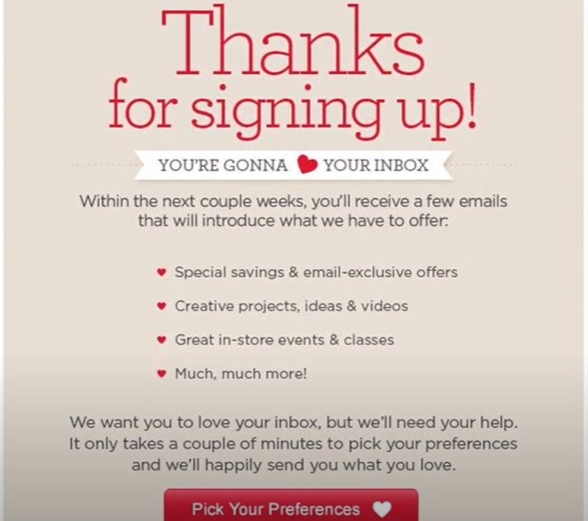
Welcome emails are considered the crucial first point of contact with your new subscribers. It creates a first impression on new subscribers. These automated messages have extremely high open and engagement rates, as they arrive precisely when the recipient decides to establish with your business.
Given their high engagement, welcome emails present a great opportunity to promote a connection with your audience. Use this email to introduce your brand comprehensively, provide clear next steps, and deliver on any promised resources or lead magnets included in the signup form. This not only reinforces the value you offer but also sets the stage for a lasting relationship.
For instance, MarketingSherpa effectively welcomes new subscribers by creating a personalized subject line that invites them into the community. The email body then details the various newsletters available, allowing subscribers to choose according to their interests. This strategy not only personalizes the experience but also aids in segmenting the audience for more targeted communication.
Ultimately, a thoughtfully designed welcome email can significantly enhance your relationship with new leads, reminding them why they opted in and guiding them on how to engage further with your brand.
2. Survey emails: We Value Your Feedback!
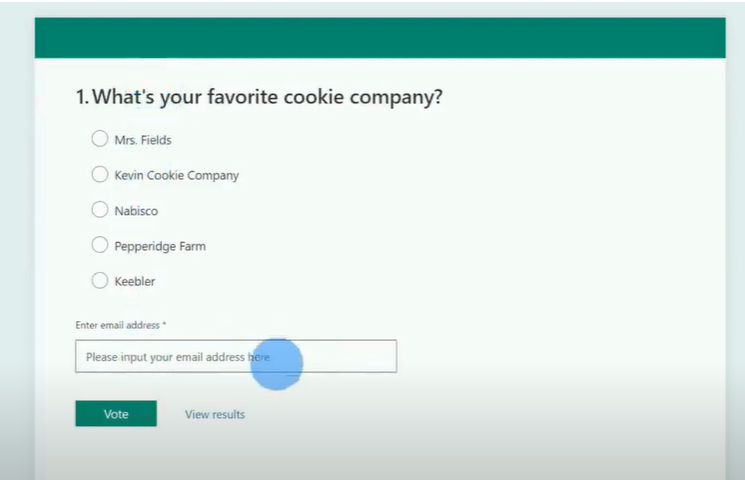
Survey emails allow you to gain deeper insights into your customers’ perceptions and experiences with your business. By making use of this valuable feedback, you can develop products, enhance customer experiences, and build targeted marketing strategies.
Sending survey emails at key touchpoints throughout their journey is essential. For example, Zapier sends a survey after ending free trial. The company analyzes the feedback to understand why some customers opt not to subscribe, solving these pain points to improve future user experiences.
Moreover, the data collected from surveys can be used to segment the audience, enabling more personalized email marketing. Suppose a post-webinar survey indicates that a participant found the section on social media marketing particularly beneficial. In that case, you can categorize them into a segment interested in this topic and send them relevant content, thereby enhancing engagement.
3. Announcements: Breaking News

Have you recently introduced an innovative new feature? Launched a limited edition product? How to set up pre-orders for your latest offering? You can share these developments with your audience through an announcement email. Local’s product update email builds excitement by thoroughly detailing all the tool’s new features, ensuring users stay informed and engaged. Each benefit is clearly articulated, ensuring that customers understand the value these enhancements bring. Additionally, the email includes a prominent call-to-action button, allowing customers to download the latest version of the software easily.
4. Exclusive Content “Solely for You!
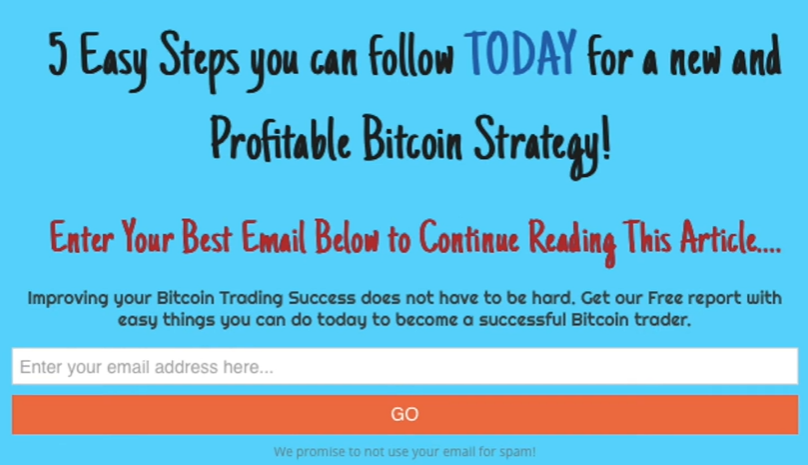
Achieving business success depends profoundly on the acquisition of knowledge, a pursuit that B2B professionals pursue to maintain a competitive edge. Thus, the dissemination of exclusive and proprietary insights plays a pivotal role. Creating meticulous reports or comprehensive studies and strategically disseminating them through targeted email marketing campaigns appears to be a critical strategy.
Illustratively, Grammarly extends complimentary access to its ‘State of Business Communication Report,’ affording B2B practitioners an unparalleled advantage in anticipating industry trends.
Similarly, DigitalMarketer provides an exhaustive guide and tracking sheet, allowing its subscribers to optimize their email marketing strategies. These resources strategically segment the audience, identifying subscribers with specific interests, thereby adjusting subsequent content to their precise needs.
5. Webinar Invitations: Let us know you’re coming

Webinars offer valuable and relevant insights that your customers will appreciate. Make use of your B2B email campaigns to schedule an appointment with your audience, ensuring they tune in to your live stream. Data.ai successfully attracts its subscribers by emphasizing the benefits of the strategies discussed in the webinar. Additionally, the company creates a sense of urgency by indicating that the opportunity to sign up is limited.
Be sure to send a follow-up link to the recorded webinar to any subscribers who were unable to attend the live session, allowing them to catch up on the valuable content.
6. Re-engagement campaigns: Hello? Are you still there?

After running your B2B email campaign for a while, you may find that some subscribers have stopped opening or reading your emails.
Inactive subscribers may be busy or no longer interested in your offerings. It is essential to rekindle their interest through a B2B re-engagement campaign. A well-crafted B2B re-engagement campaign can encourage these subscribers to start interacting with your emails again.
The exact content of your campaign will depend on your business, but here’s an example of an effective automation type designed to remind customers of your product and reignite interest in your brand:
-
Send a reminder: Reach out to your audience to let them know you’re still here.
-
Add an incentive: Offer free trials, exclusive content, or promo codes to rekindle interest of subscriber. Highlight the incentive in your subject line to grab their attention.
-
Create urgency: Warn your audience they may lose benefits if they don’t act soon. Use a countdown timer to stress urgency.
-
Say farewell: Send a friendly goodbye email just before unsubscribing them, including a resubscribe link so they can rejoin your list in the future.
If the subscriber still hasn’t interacted by the end of this sequence, it’s best to remove them from your list. Persisting with inactive contacts can lower your email deliverability, so focus on subscribers who actively engage with your emails.
Grammarly provides a great example by using a ‘wrinkle in time’ badge to creatively indicate the passage of time. It is also accompanied by a bright red call-to-action button that encourages customers to quickly re-engage with their product.
7. Cross-promotion: Have you checked this out yet?
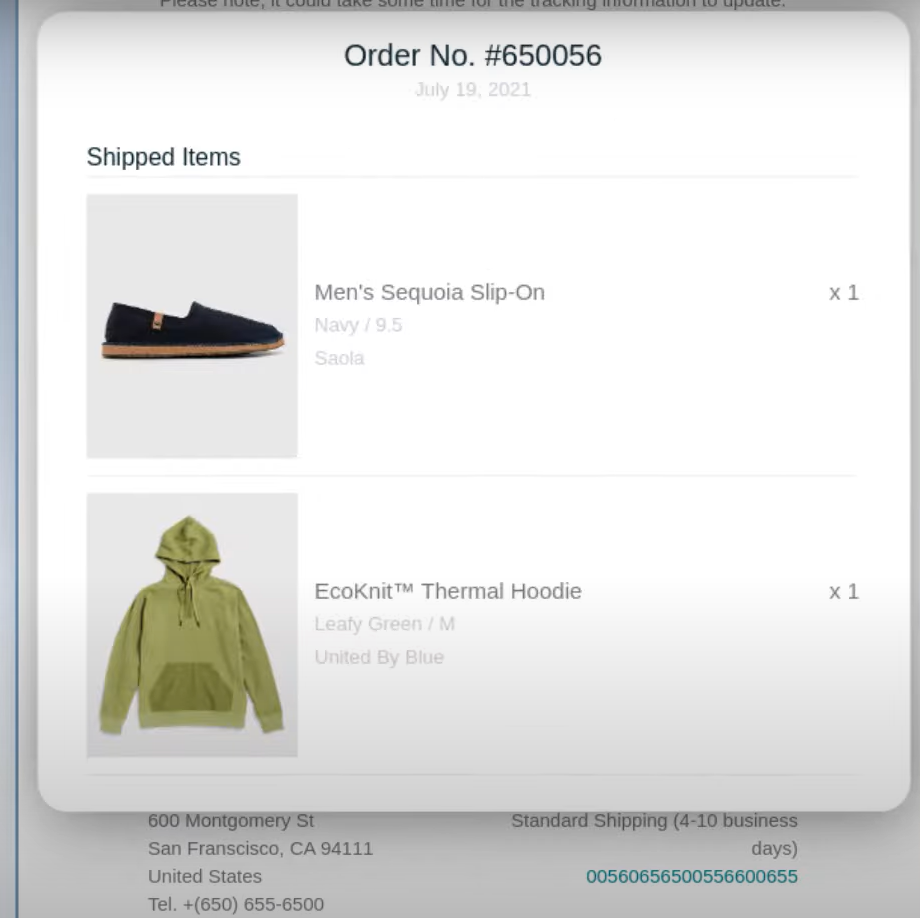
You can use B2B email marketing campaigns to drive traffic to your various content platforms. They include links to your website, company blog, social media posts, and YouTube channels. This strategy not only boosts engagement on these platforms but also strengthens client relationships and supports them in achieving their goals.
For example, Inside Design effectively connects subscribers to multiple relevant articles, allowing them to choose content that piques their interest. Similarly, Upwork employs a straightforward approach by sharing a curated list of ideas and inspiration for businesses, driving traffic to their diverse content sources.
8. Event Newsletters: Unlock your invitation now!

Are you hosting or attending B2B events? Event newsletters can be an effective way to create interest in your event, leading to increased signups, ticket sales, and booth visits.
Follow these steps for effective event communication:
Step 1: Pre-Event Newsletter
-
Guide Your Audience: Before the event, provide a concise guide to what’s happening. Highlight speakers, topics, and key stands. It is necessary to have a signup link for interested participants.
-
Your Presence: If you’re attending an event, let B2B buyers know where they can find you
Step 2: Post-Event Email
-
Recap and Reinforce: Send a post-event email to recap what happened. Show key points discussed during the event.
-
Share Recordings: If applicable, include a link to event recordings.
-
Participant Survey: Gather feedback through a survey to improve future events.
9. White Paper Distribution: Discover New Strategies Today!
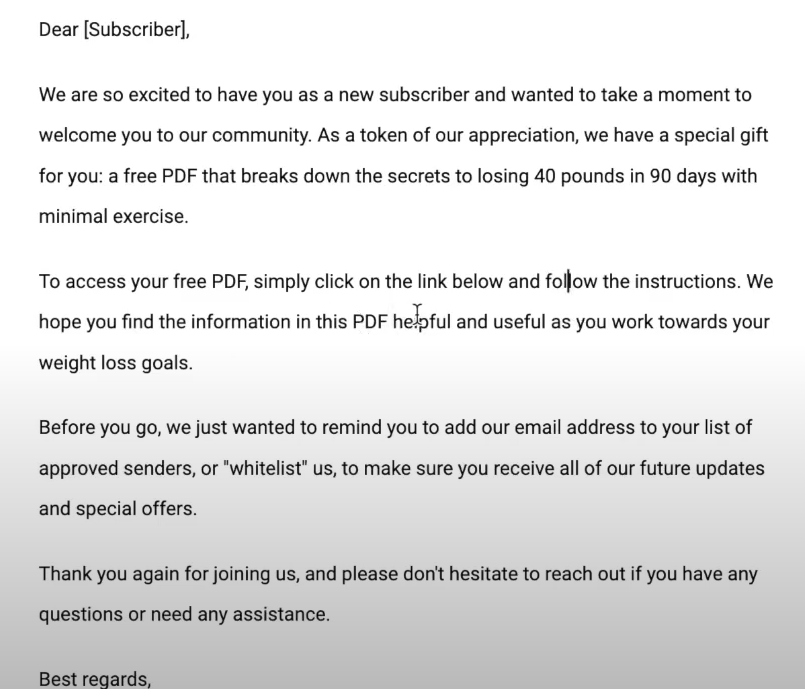
In B2B marketing, white papers serve as in-depth documents that show your expertise and provide valuable insights. These white papers establish your authority in your field. If you have knowledge about industry trends, policy changes, or innovative solutions, don’t keep it to yourself—share it!
Compose comprehensive, long-form content that delves deeply into these topics, demonstrating to your audience that you are well-versed and current with industry developments.
For example, in the email newsletter, Merkle presents a white paper that explores the changes in consumer behavior since the COVID-19 pandemic and develops strategies for businesses to effectively re-emerge.
10. Case Study Emails: Thing we made earlier

A B2B case study offers a compelling way to tell your story and showcase your expertise through real-life success. You can:
-
Illustrate how your product or service transformed a customer’s experience
-
Demonstrate your impact on your field
-
Highlight your contribution to a project
Case studies are invaluable to B2B marketers because they vividly show your solution in reality. Showcase your product’s strengths, and your audience will understand the real benefits of becoming your customers.
In the case study of Animalz, they hook readers with a strong opening sentence, clearly stating why subscribers should keep reading. Instead of using a CTA button, they dive straight into the story, capturing their audience’s interest from the start. Everyone loves stories—tell yours and demonstrate to your subscribers exactly how you convey value to your customers.
11. ‘Tips and tricks’ emails: Did you know?
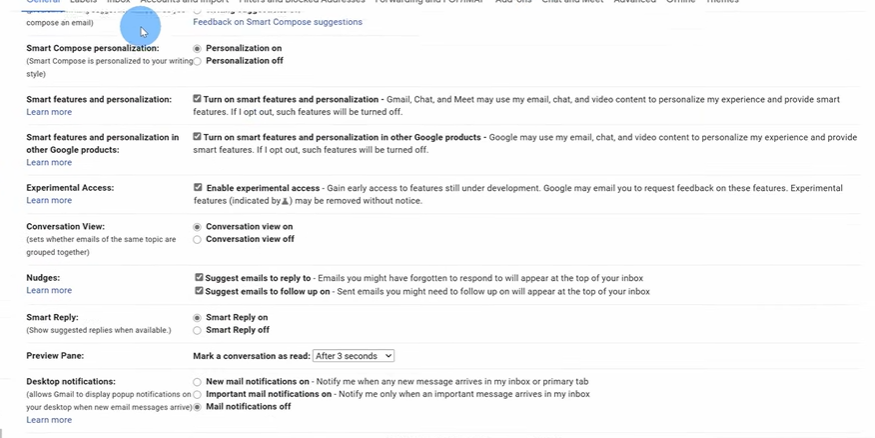
In B2B email marketing, the journey doesn’t end with the sale. It’s crucial to continually nurture customer relationships post-purchase. By sending regular updates, showcasing new products, and offering practical tips and tricks on maximizing service utilization, businesses can enhance customer satisfaction and retention.
Effective email strategies, exemplified by Asana’s approach, play a pivotal role here. They not only educate users on getting the most out of their products but also ensure that your company remains top-of-mind when the client enters their next procurement phase. This proactive engagement not only boosts immediate satisfaction but also strategically positions your organization for future business opportunities.
Moreover, ‘tips and tricks’ emails serve as a valuable tool for reinforcing the value proposition of your offerings. By demonstrating ongoing support and adding value beyond the initial purchase, businesses can foster long-term loyalty and advocacy among their client base. This approach not only help increase customer engagement but also strengthens the overall brand perception.
Make use of ‘tips and tricks’ emails as part of your B2B marketing strategy is essential for sustaining customer relationships and maximizing business potential. By consistently providing valuable insights and updates, businesses can establish themselves as trusted partners, ensuring continued success in a competitive market.
12. Industry news updates: This is the current situation
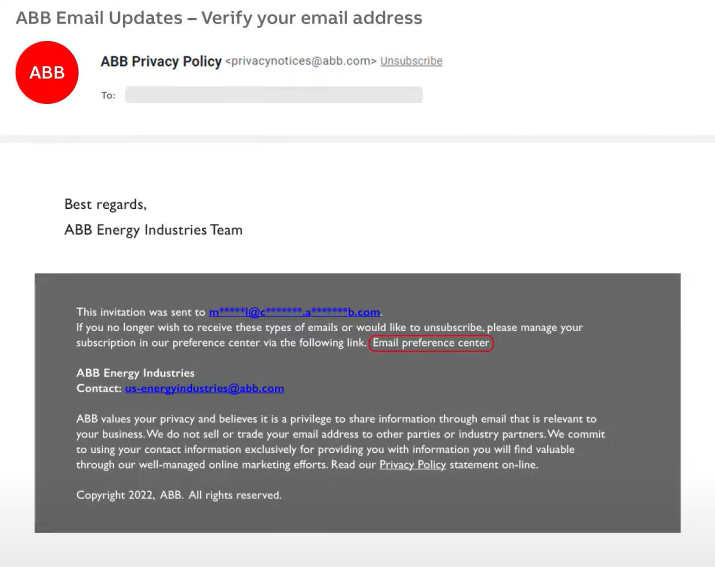
In B2B email marketing, maintaining customer engagement after the sale is paramount. Sending curated industry updates ensures subscribers consistently open emails, positioning your brand as a trusted source of timely information. This not only maintains visibility but also influences future purchasing decisions.
For instance, Smash Digital’s monthly SEO roundup exemplifies effective content curation. Each email delivers comprehensive insights from the previous month, without excessive promotional content, enhancing subscriber engagement and loyalty.
B2B email marketing involves strategically using email to promote products and services to other businesses, employing regular newsletters and automated campaigns throughout the customer journey. While traditionally seen as lacking creativity, contemporary B2B marketing emphasizes injecting personality and values into communication, as evidenced by the examples provided.
The email content is informative and minimally promotional. However, the brand maintains awareness among email subscribers by consistently sending these messages.
13. Training and tutorials: Enroll in our course.
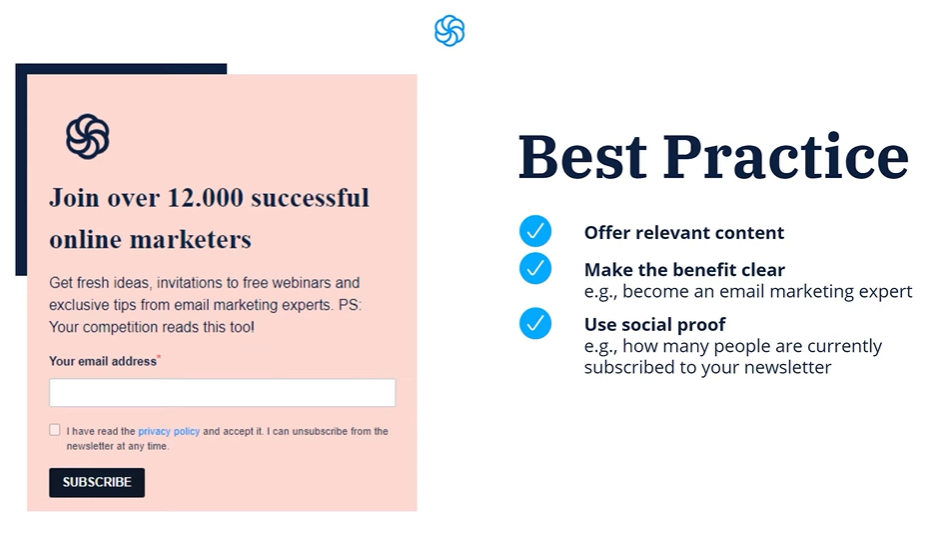 In addition to providing tips and articles, consider sharing complete courses to help your subscribers stay ahead in their industry and improve their skills.
In addition to providing tips and articles, consider sharing complete courses to help your subscribers stay ahead in their industry and improve their skills.
Discover the power email of competitive intelligence with Semrush’s comprehensive, free competitor research course. Gain exclusive insights into cutting-edge strategies for analyzing competitors using Semrush’s industry-leading tools. Learn actionable techniques to refine your marketing approach, uncover market trends, and stay ahead of the competition. This course isn’t just about theory; it’s a hands-on opportunity to master practical skills that drive real results in your industry.
This email shows the reasons why choose Semrush’s course. It’s designed for professionals like you, offering step-by-step guidance and expert tips adjusted to maximize your marketing efforts. Upon completion, you’ll not only enhance your skill set but also earn a certificate recognized in the industry. Join thousands who have already transformed their strategies and see why Semrush stands out as a trusted partner in marketing excellence.
Kickstart your B2B email marketing campaign
There are unlimited methods you can leverage email marketing to interact with your audience, depending on your business and the objectives of your marketing plan. One unique thing about email marketing is how simple it is to customize a strategy for your particular demands or requirements.
Whether it’s appealing content, case studies, or free offerings, your brand can make use of email marketing to strengthen the relationships with your mailing list. Then, if everything is smooth sailing, email marketing can direct customers down your sales funnel gradually and eventually rocket your revenue.


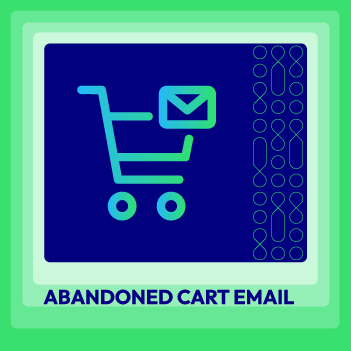



![Top 20+ Must-have Shopify Apps for 2025 [Free & Paid] - Mageplaza](https://cdn2.mageplaza.com/media/blog/must-have-shopify-apps/top-must-have-shopify-apps.png)
![[2025 Updates] Top 10+ Upsell Apps for Shopify - Mageplaza](https://cdn2.mageplaza.com/media/blog/best-upsell-shopify-app/cover.png)